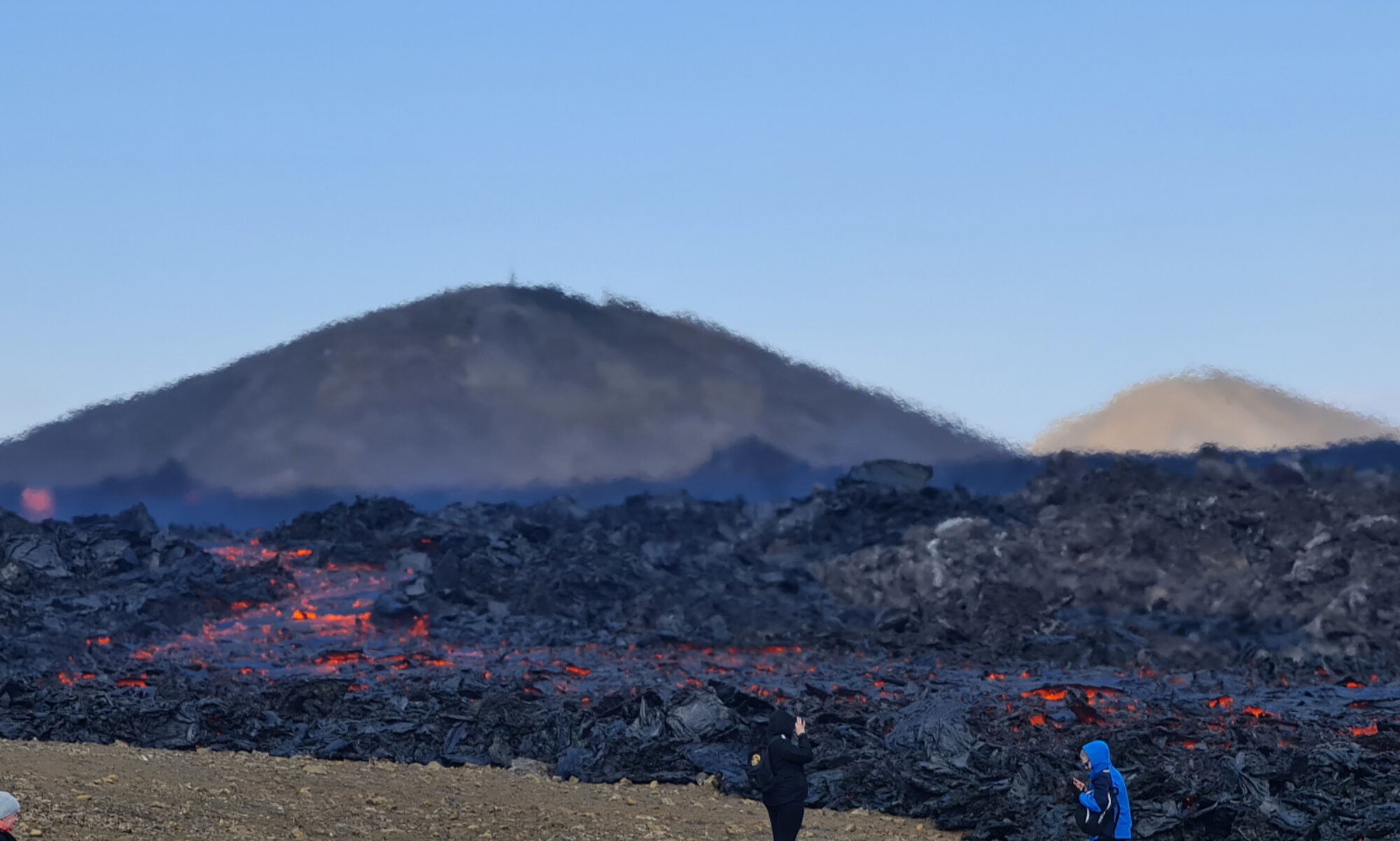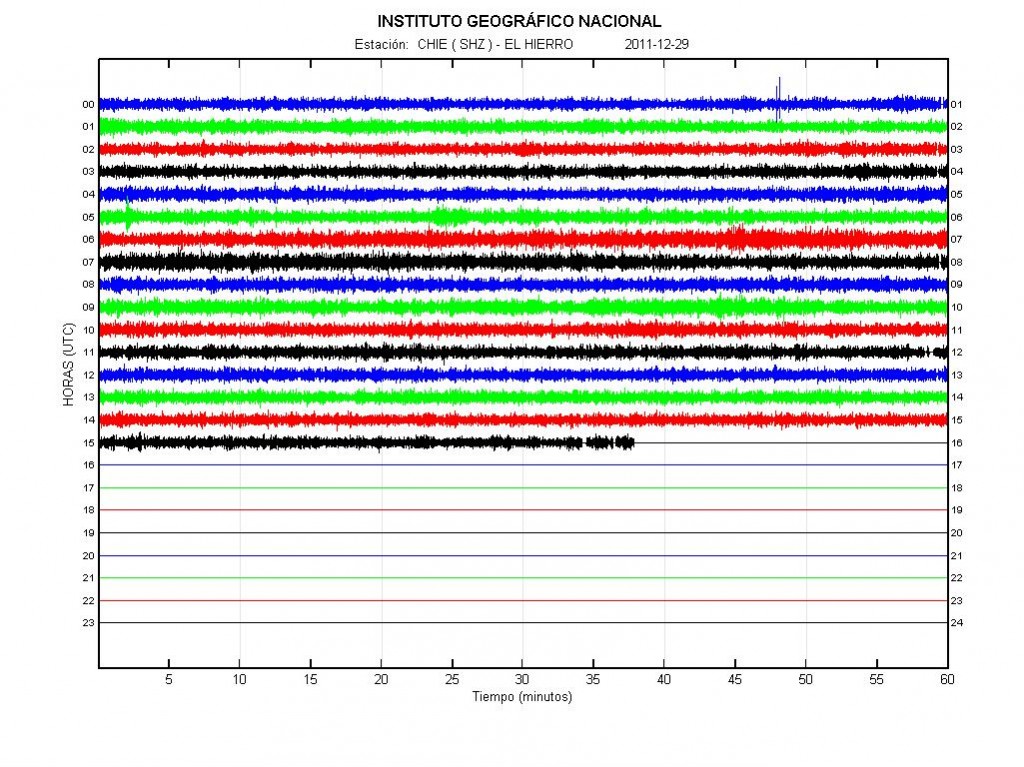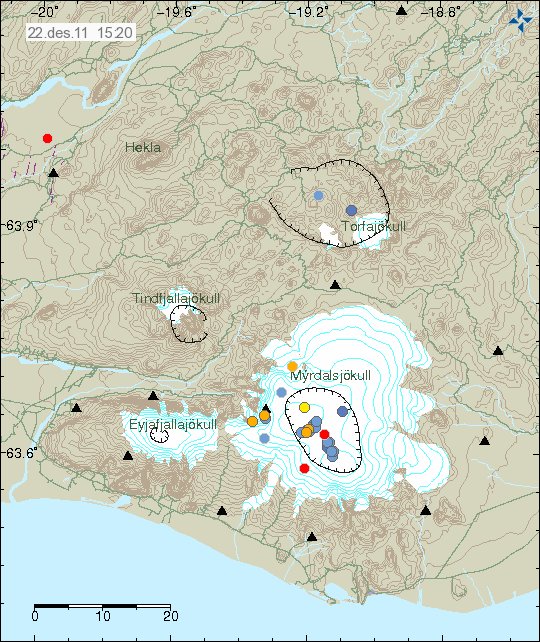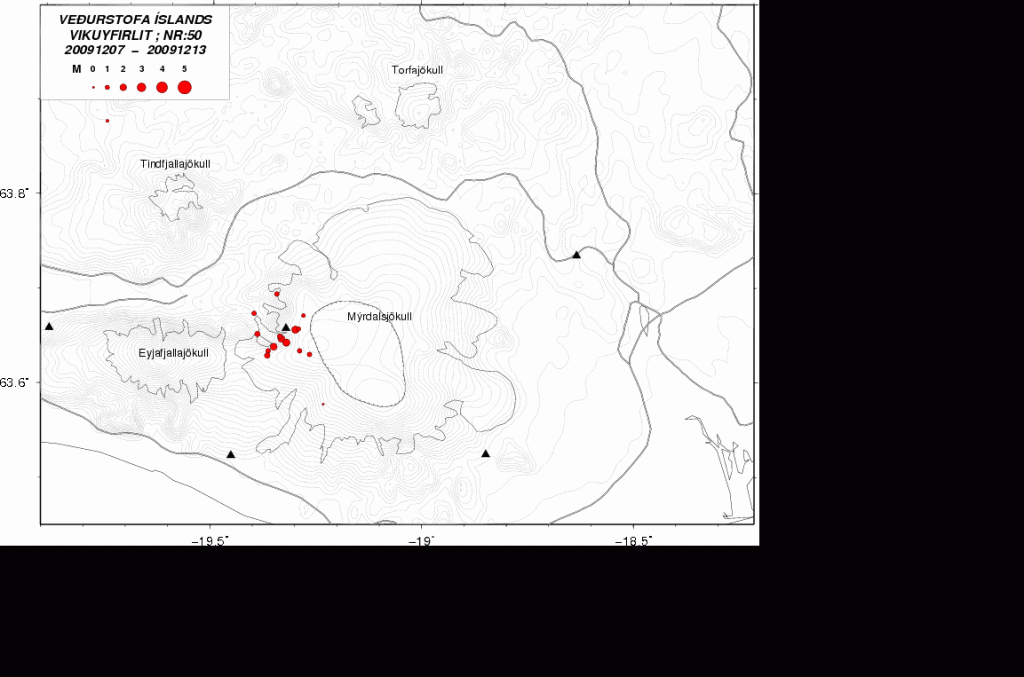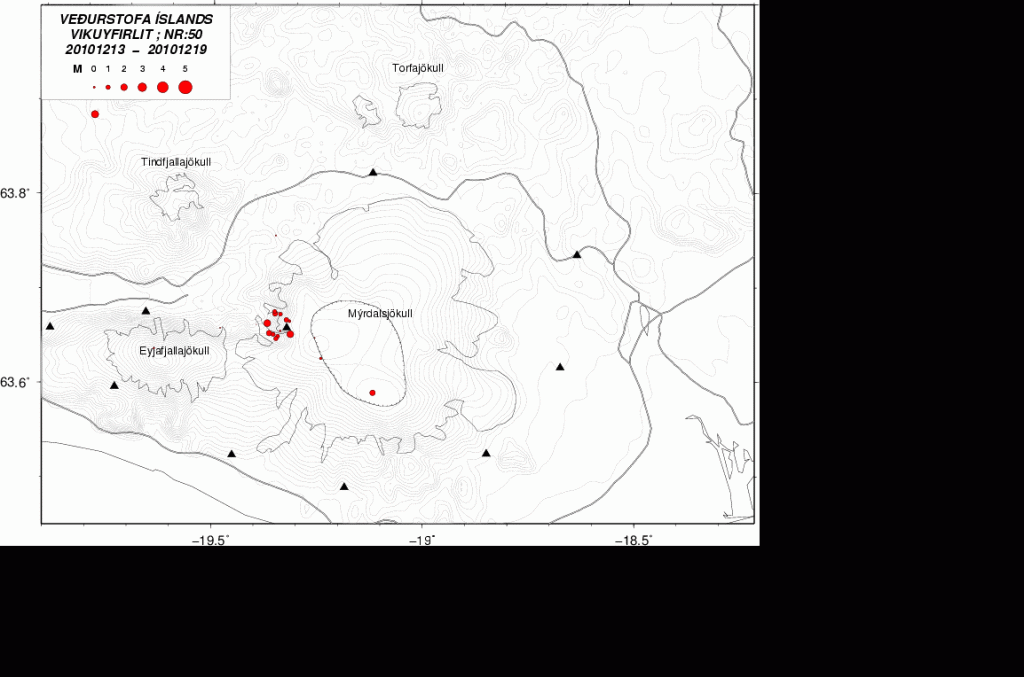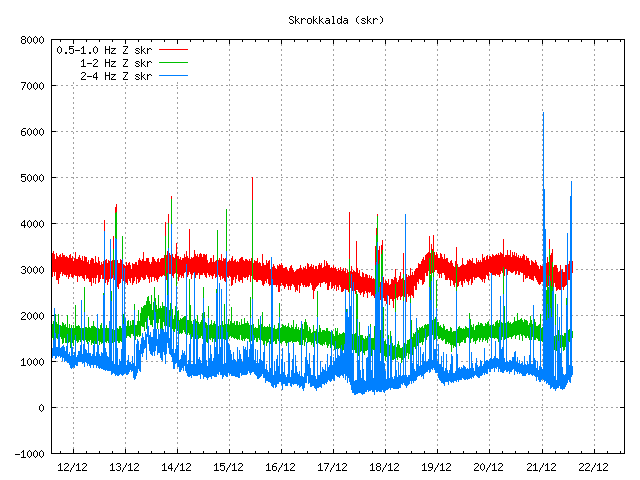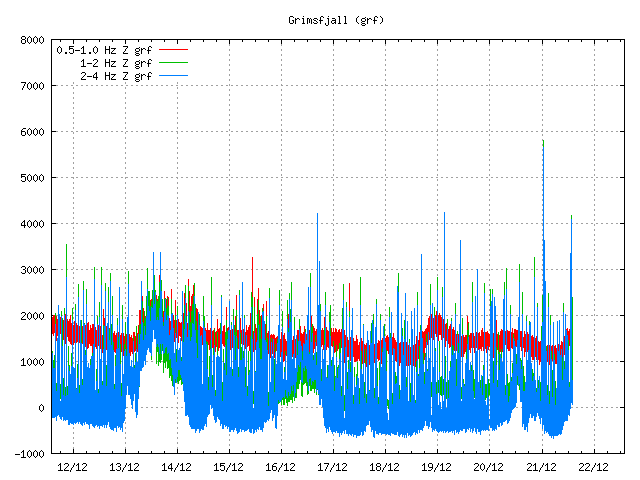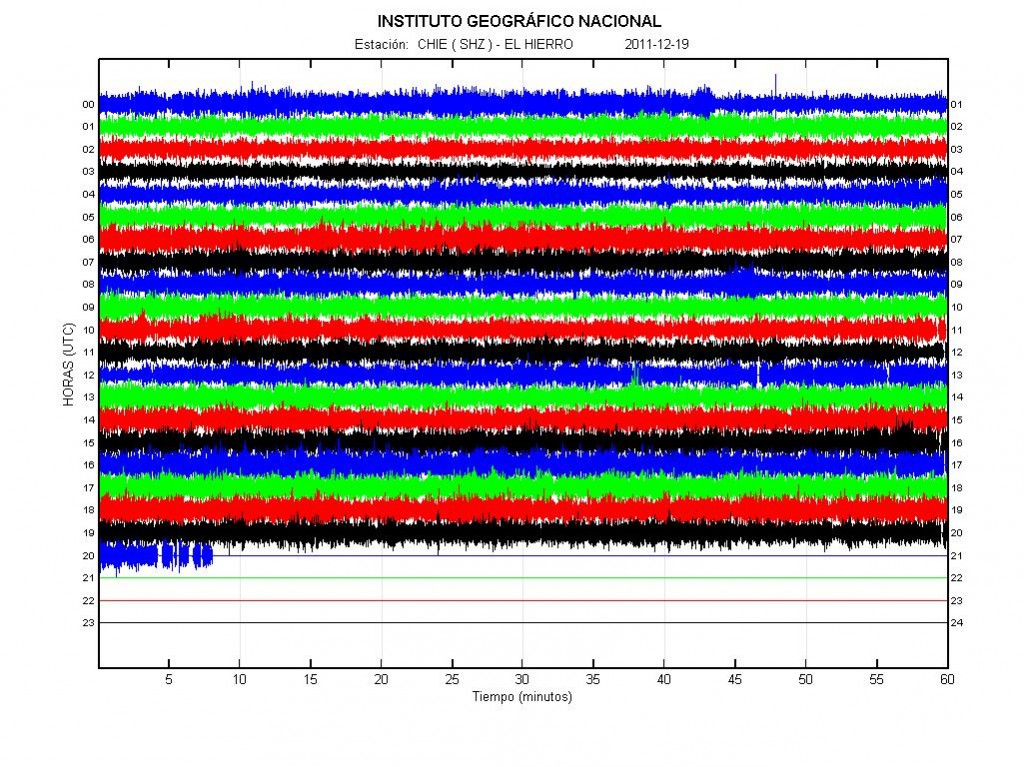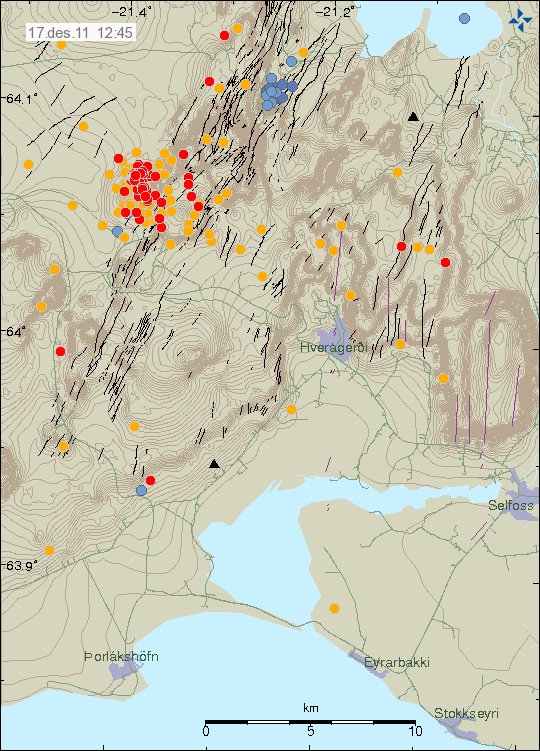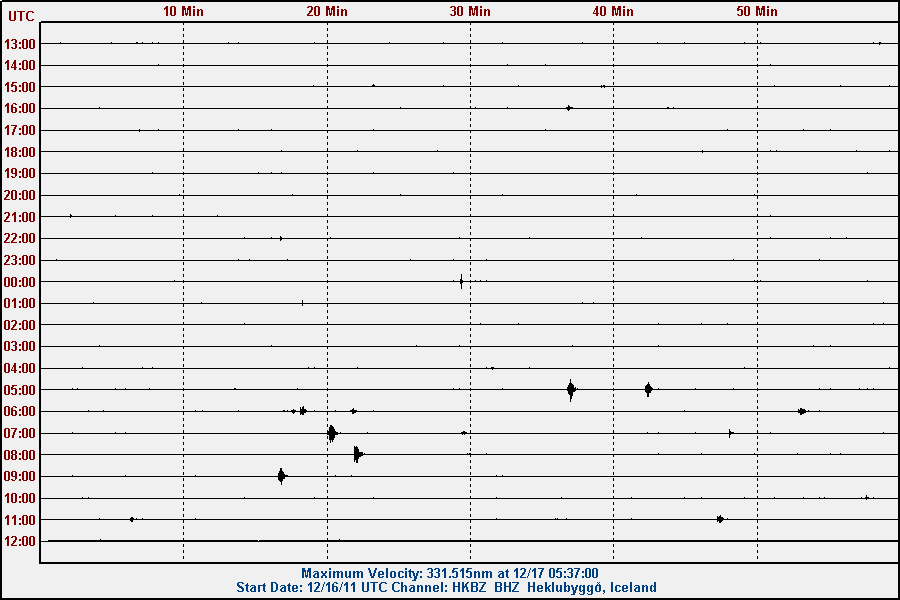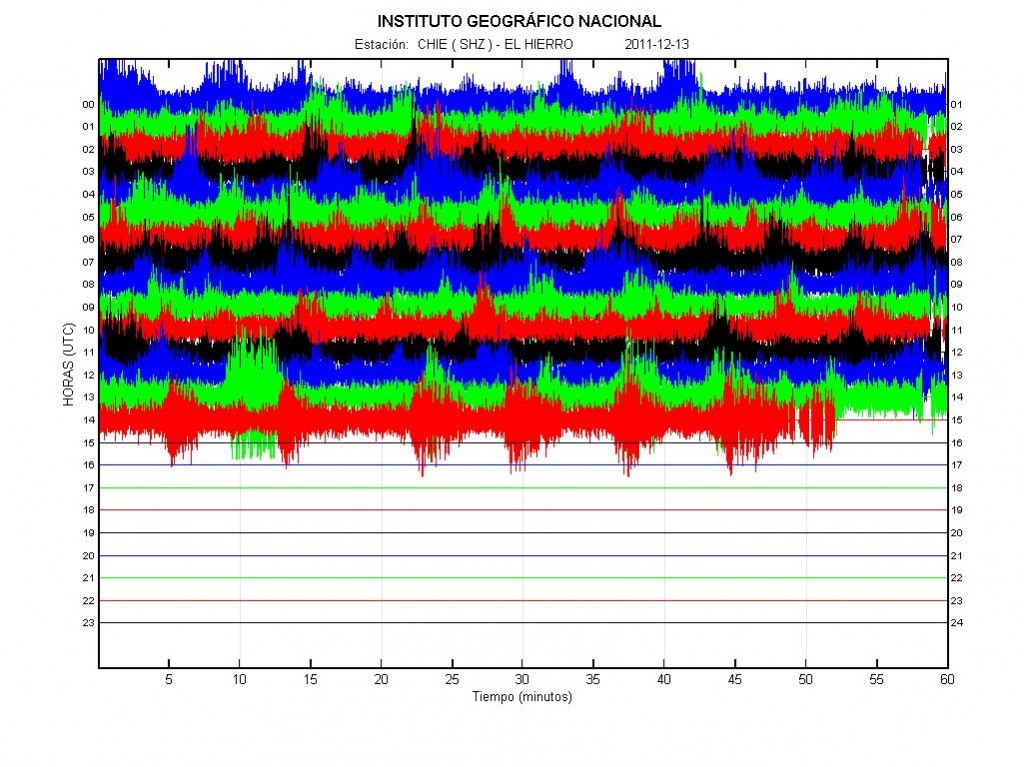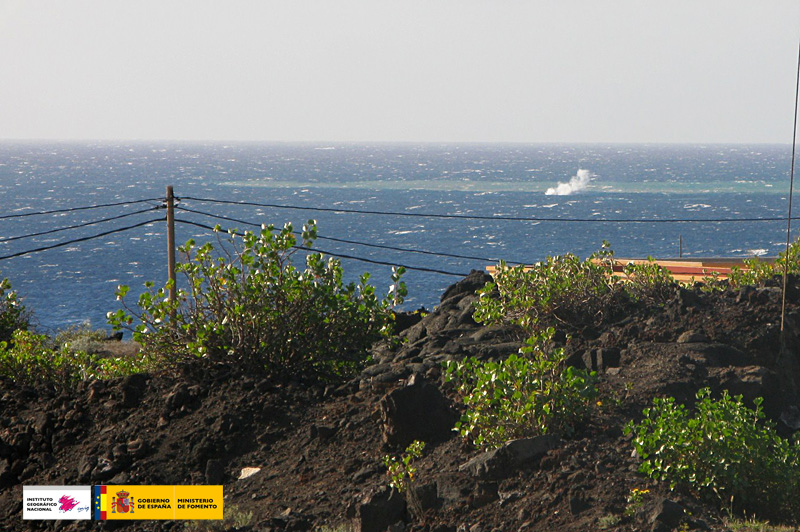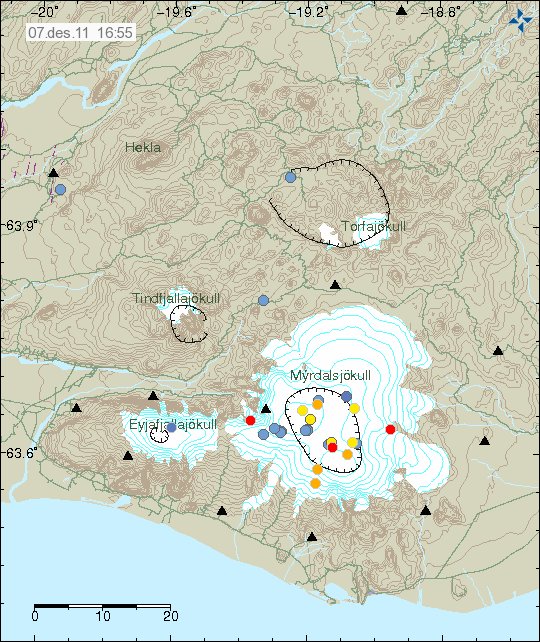Even if it is December and Mýrdalsjökull glacier has added around 6 meters of snow on top of it self. It seems that the earthquake activity in Katla volcano is rather strong, even if it winter already in Iceland.
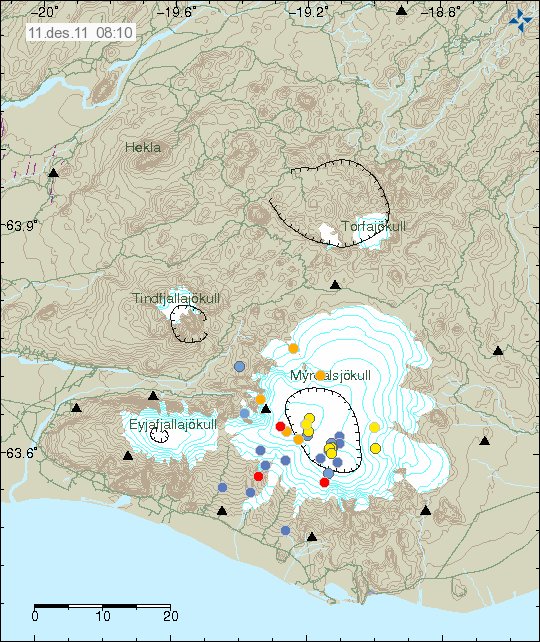
Earthquake activity in Katla volcano past 48 hours. Some of this earthquakes might be frost-quakes due the freezing weather in Iceland for the past few days. Copyright of this picture belongs to Iceland Met Office.
The earthquake activity in Katla volcano is resistant in the Katla volcano caldera and has been that for several weeks already. I cannot interpreted this earthquake activity other then Katla volcano is preparing for an eruption. But when I am not sure at this moment. There is an pattern of earthquakes in Katla volcano caldera, this pattern has been in place since Week 27, but that is the week when the minor eruption took place in Katla volcano caldera last summer (summer 2011).
It is clear that this earthquake activity in Katla volcano is going to continue. I am assuming that this earthquake activity is going to continue until a eruption takes place in Katla volcano. But there is also the chance of the year 1999 event. When a small eruption took also place and earthquake activity remained high for several weeks after that. But after some time the earthquake activity started to drop. For the moment I find that to be unlikely outcome given how long the earthquake activity has remained high in Katla volcano after the minor eruption this summer.
Donations: I am going to try and setup the geophones in Eyrarbakki village and the geophone close to Katla volcano in December. But that trip is going to cost me some money (I pay for the car benzine), but the cost might go as high €157, 1169 DKK, $210, 25.000 ISK (current exchange rates) just for gas (on an car) for that trip. So if anyone can help with this cost it would be welcomed. Thanks for the support! 🙂
Update 1: I am most likely going with the bus. But that also costs some money, around 3900 ISK, 182 DKK, 24€. $32, 20GBP (Current exchange rates).
Blog post updated at 13:12 UTC on 12 December, 2011.
